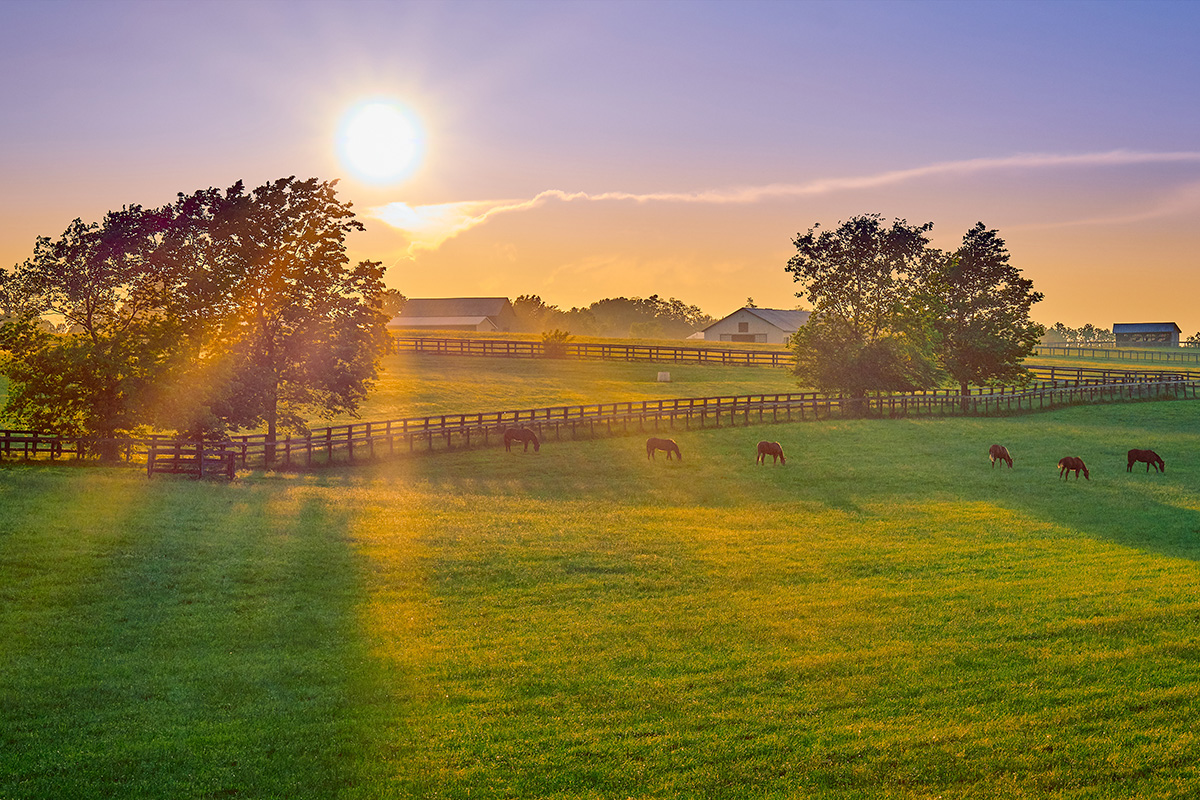Horses are intelligent, especially when it comes to their own comfort. On a hot summer afternoon, you’ll usually find horses seeking out any shade they can find, standing in the shadow of the stable, hay barn, or possibly even shade trees.

The tricky part may be choosing the right trees for the job. Not all trees are equal for providing shade, and not all trees are healthy for horses to be around. There is also the matter of growth speed—if you’re starting absolutely from scratch, you might want to select trees that grow quickly.
There is also the possibility that you’ll need to remove trees from your horse property if they are potentially poisonous to horses. It’s definitely a regional issue, so a local extension office is an ideal place to get some advice on horse- and livestock-safe trees for your area.
To help you get started, here are a few ideas for trees that grow well across most regions of the U.S.
Trees for Excellent Shade
Hackberry/sugarberry trees: These trees grow to about 50-70 feet, so they fit well with the pastures and buildings of your property, but they have a nice, leafy crown that provides plenty of helpful shade—and they’re safe for horses to be around.
Magnolia trees: Magnolias, along with the related tulip poplars, are popular in southern regions and also don’t grow terribly tall.
Willow trees: While short, willow trees have a nice look and provide good shade while being safe for horses.

Eastern cottonwoods: These are impressive specimen trees, grow quite tall, and they’re also equine-safe.
Quick-Growing Trees
If you’d like to create a shady spot quickly, you’ll probably want to look at some sort of softwood tree. These trees tend to grow faster because they put less density into their wood (hence the name “softwood”) and this allow them to reach for the heights quickly.
These include conifers—like spruces or pines—that are native to your region. Conifers provide a nice rural evergreen appearance and can make significant height in just a decade or less. You should be able to find a pine variety that will fit just about any U.S. climate (but check their specific toxicity), though spruce trees may not thrive too far south.

It should be noted that consuming conifer needles in any great amount would not be healthy for horses, so that’s something to consider in some situations. Another downside to these trees is that their branches can be more breakable in wind.
There are some quick-growing hardwoods, too—green ash is an excellent option. It’s an attractive tree with unique compound leaves and a classically shaped crown. While prone to insect attack from the emerald ash borer, regions that don’t have this insect can grow impressive ash trees that offer great pasture shade.
Trees to Avoid Near Horses
Red maples: There are quite a few different species of maple trees, but red maples in particular are well known for the extra toxicity of their leaves, particularly when they are wilted, like from a freshly broken branch. You want to avoid red maples for shade in your pastures, and might consider removing the trees from around your pastures and horse property in general. In the early fall, red maple leaves turn a very bright hue of pure red, and the leaves are more “spiky” looking than other maples.

Walnut: Walnut trees, along with related species in the Juglandaceae family, produce juglone, which is a toxic substance that the tree uses to discourage plant growth around it. The radius of juglone is as much as 80 feet from the tree. Juglone is also harmful to horses—there are even examples of it causing laminitis—so these are definitely trees to avoid planting intentionally. Walnuts can sometimes be found on old farmsteads, so if your current horse property sits on an old farm, scout for walnut trees and consider removing them.
Oak: Sadly, as beautiful and shade-providing as a grand oak tree is, the leaves and acorns contain tannic acid, which isn’t safe for horses. Its fresher leaves are more problematic than dried ones.
Keeping Trees Safe Around Horses
It’s important to note that if you have trees directly in your pastures, you may need to fence them off with a small buffer to keep horses from chewing the bark (which, if done excessively, can kill the tree).
Horses with plenty of pasture grass typically don’t waste time with novelties like bark chewing, but a bored horse can become pretty destructive. Fencing the tree off individually is usually a better idea than trying to cover the bark.

Trees and horses can work well together; trees provide shade and erosion control. Plus, they add visual value to your land. Start planting now for beautiful shade in just a few short years!
This article about shade trees for horses is a web exclusive for Horse Illustrated magazine. Click here to subscribe!





